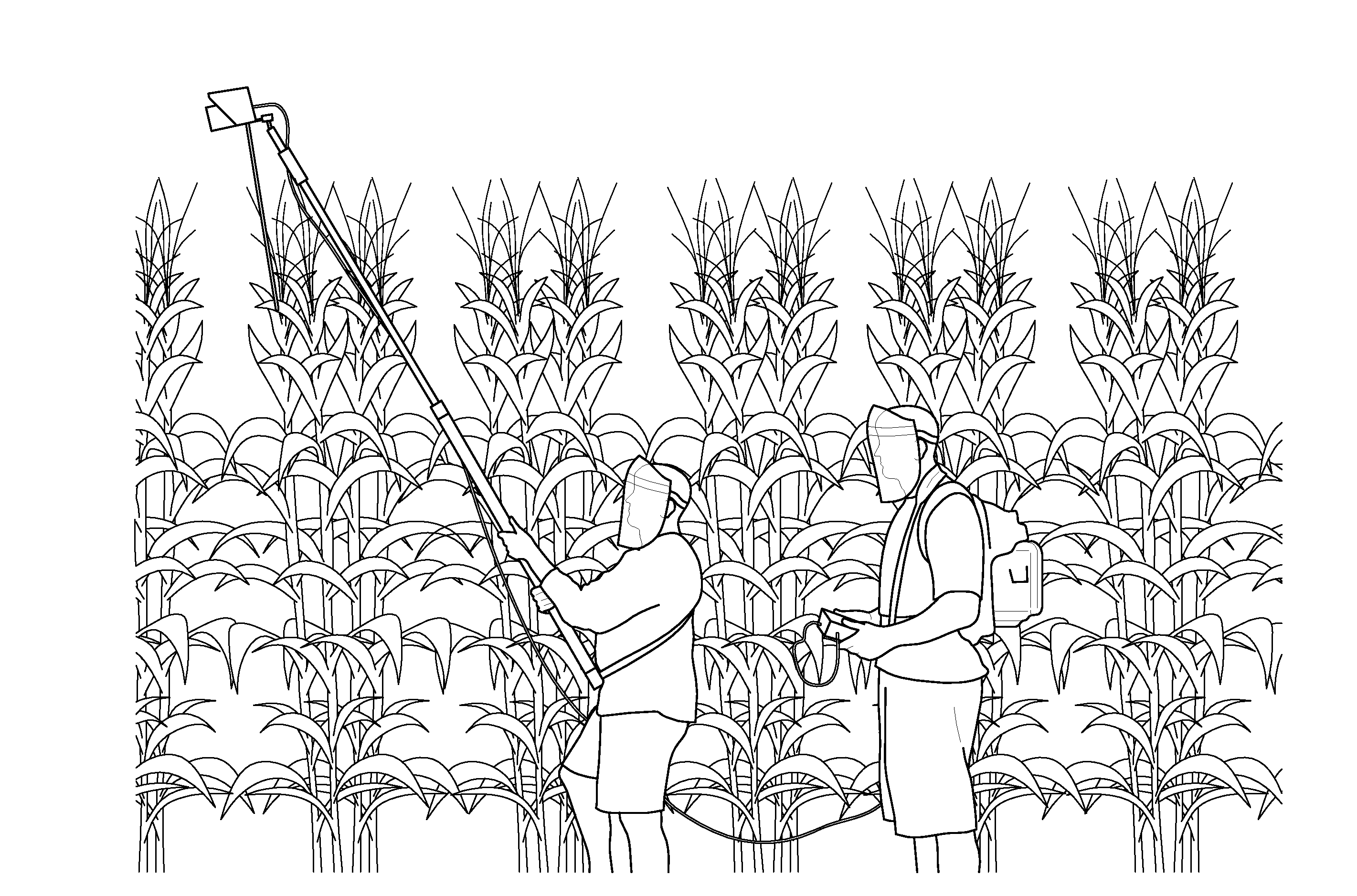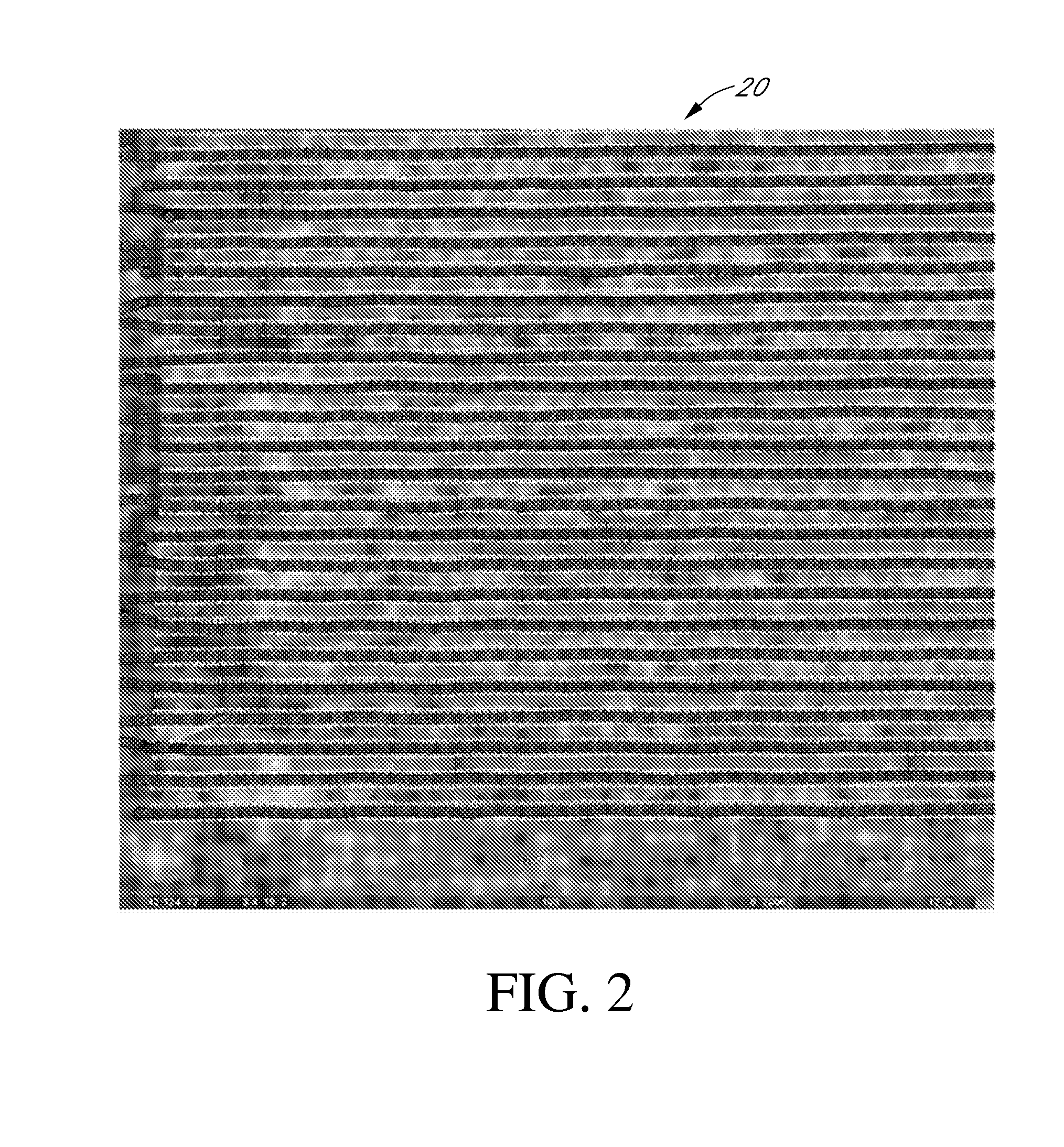Crop Automated Relative Maturity System
a technology of relative maturity and crop, applied in the field of automated crop relative maturity measurement system, can solve the problem of time-consuming and labor-intensive data collection method
- Summary
- Abstract
- Description
- Claims
- Application Information
AI Technical Summary
Benefits of technology
Problems solved by technology
Method used
Image
Examples
example 1
[0046]Two fields were planted on a farm located near Ames, Iowa. Field A was planted on May 21. Field A comprised 21 acres (1920 feet by 480 feet) and was divided into 36,864 plots as shown in FIG. 5. Check variety S08-M8 was planted in rows 1 and 2 and 49 and 50, and check varieties S15-R2, S21-N6, S25-B9 and S30-F5 were planted in rows 2-6 and 51-54, respectively. Experimental varieties were planted in the other plots. Specifically, experimental varieties A-N were planted in rows 7-20, respectively, and across range 1 (FIG. 7). Field C was planted June 17 the same year. Field C comprised 20 acres (1800 feet by 480 feet) and was divided into 34,560 plots as shown in FIG. 6. Check varieties S15-R2, S21-N6, S25-B9 and 530-F5 were planted in rows 1-4 and 49-52, respectively. Experimental varieties were planted in the other plots. Specifically, experimental varieties O-Z and A1-D1 were planted in rows 5-20, respectively, and across rangel (FIG. 8). The check varieties covered maturity ...
example 2
Experiment Corn Staygreen Phenotyping Methodology Trial
[0052]An experiment using the devices shown in FIGS. 11a and 11b were employed on maize to detect the staygreen of plants in trials. Staygreen is a function of plant health, plant stress, insect and disease pressures on the plant These stay green trials were maize inbred trials and maize hybrids trials. The hybrid trials had 8, 30 inch rows, 40 foot long plots. The data was collected with canopy readings taken between rows four and five, of all 65 plots. Below canopy readings taken between rows four and five, on the first set of 16 plots.
[0053]The inbred trial had 1, 30 inch row, 20 foot long plots. The above canopy readings taken over the row, for the first 100 plots. In all the trials, five readings, one per week, were taken. Some frost damage occurred between the 4th reading and last collection date. Average staygreen readings were taken as visual readings and active sensor readings as shown in FIGS. 12a and 12b.
[0054]In the...
example 3 sudden
Death Syndrome
[0057]The seed was planted at a density of 10 seeds per foot and a row width 30 inches and a GPS map of the seed planted in the fields was created at the time of planting. Data was to be collected from the soybean field for determination of relative maturity. However, prior to the time period for data collection the field was highly impacted by Sudden Death Syndrome (SDS). This disease causes plants particularly those in the R4-R6 stage to die prematurely. Premature death of part of the plants in the field most susceptible to Sudden Death Syndrome would skew any relative maturity ratings. It was determined that data will be collected using the PDF 450G detasseling machine, modified as shown in FIGS. 3 and 4. The speed of the detassler will be approximately 3 mph and driven transverse to the rows. The GreenSeeker® RT100 sensor will initially be set to collect data at 50 msec (20 data points per second) to match the GPS data stream from the NovAtel ProPak®-V3 device. To ...
PUM
 Login to View More
Login to View More Abstract
Description
Claims
Application Information
 Login to View More
Login to View More - R&D
- Intellectual Property
- Life Sciences
- Materials
- Tech Scout
- Unparalleled Data Quality
- Higher Quality Content
- 60% Fewer Hallucinations
Browse by: Latest US Patents, China's latest patents, Technical Efficacy Thesaurus, Application Domain, Technology Topic, Popular Technical Reports.
© 2025 PatSnap. All rights reserved.Legal|Privacy policy|Modern Slavery Act Transparency Statement|Sitemap|About US| Contact US: help@patsnap.com



